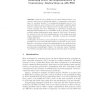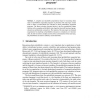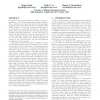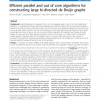13 search results - page 2 / 3 » A Cell Assembly Model of Sequential Memory |
DFT
2005
IEEE
13 years 11 months ago
2005
IEEE
Sequential elements, flip-flops, latches, and memory cells, are the most vulnerable components to soft errors. Since state-of-the-art designs contain millions of bistables, it i...
ECOOP
2010
Springer
13 years 10 months ago
2010
Springer
ncy Abstractions on x86-TSO Scott Owens University of Cambridge Abstract. With the rise of multi-core processors, shared-memory concurrency has become a widespread feature of compu...
CSL
2006
Springer
13 years 9 months ago
2006
Springer
A complete and decidable propositional logic for reasoning about states of probabilistic sequential programs is presented. The state logic is then used to obtain a sound Hoare-styl...
VLDB
2007
ACM
14 years 5 months ago
2007
ACM
Low-latency and high-throughput processing are key requirements of data stream management systems (DSMSs). Hence, multi-core processors that provide high aggregate processing capa...
BMCBI
2010
13 years 5 months ago
2010
Background: Assembling genomic sequences from a set of overlapping reads is one of the most fundamental problems in computational biology. Algorithms addressing the assembly probl...




